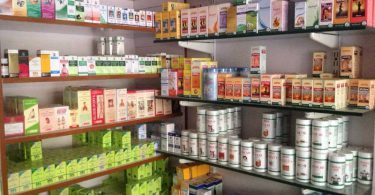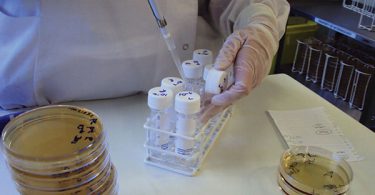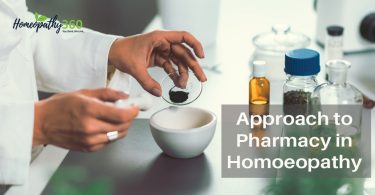ABSTRACT: The term “Standardization” has always played an important role in manufacturing of homoeopathic medicines. A product as such indicates the purity and quality of the medicine, hence improving its efficacy when administered for cure. This article throws light on the basic methods which are to be undertaken for the evaluation of the drugs in the case of plant crudes.
KEYWORDS: Evaluation of drugs, methods of organoleptic evaluation, microscopic evaluation, physical evaluation chemical evaluation, and biological evaluation methods.
INTRODUCTION: The acceptability of any drug is established by prescribing a standard, efficacy and its quality. The importance of the process of evaluation should be stressed upon, which further leads to the production of a standard product.[1]This process should start from the proper identification of the source, accurate collection, its careful preservation and a standard technique of the preparation, henceforth ensuring the quality of the drug.[2][3][4]This preparation leads to the production of genuine medicines which are of unimpaired strength[5],so that the prescriber can rely on the therapeutic powers of the remedy. Ensuring the physician high and only mission to restore the sick to health, to health to cure as it is termed.[6]
Different methods of standardization of the crude drug are namely:[1][2][3][4][5]
1) Organoleptic evaluation
2) Microscopic evaluation
3) Physical evaluation
4) Chemical evaluation
5) Biological evaluation
1) Organoleptic evaluation: It is data perceived by the sense organs. For instance, the appearance(the eyes), odour (the nose), taste( the tongue). Other macroscopic appearances are important in the evaluation of the crude material of plants:
A) Shape and size : the part of the plant procured rhizome, root, corns, bulbs tuber or the aerial part of plant, it’s size has to be described in terms of length/breadth/measurement of radius or diameter.
B) External color.
C) External markings (furrows, ridges, annular rings that help in estimation of the age of the plant). D) Fractures (the way the plant breaks when subjected to pressure).
E) Flowers and leaves: botanical identification.
F) Odor: aromatic, terbinthinate, ethereal, etc.
G) Taste: e.g.: acids, saline, pungent.
H) Color: based on the Inter society colour council, national bureau of standards method.
2) Microscopic evaluation: usually utilized for the detection of any impurity in the powdered drug and also identification of pure drug substances. Broadly includes vascular tissue system (xylem and phloem), cell contents, calcium oxalate crystals (excretory products of plant metabolism), calcium carbonate, fixed oils and fats.
Cellular raw material microscopy:
a) Quantitative microscopy
b) Leaf surface preparation(arrangement of tissues, linear measurement)
c) Powdered drug study(cell contents, cell dimensions)
Acellular drugs evaluation:
a) Solubility in alcohol (Partially/completely)
Microchemistry: The study of constituents of drugs by the application of chemical and physical methods to a few milligram of the crude or a histological preparation of the drug. They include:
1. Isolation of constituents of drugs( micro sublimation where a small quantity of the drug is heated to evaporation, the vapors are collected in crystallized form by using the method of condensation, further crystallography determines the identity of the constituent).
2. Another method includes chemical solvents(micro extraction i.e. the separation of constituents from a small quantity of the drug, microfiltration and microcrystallisation).
Identification of the constituents is done with the help of confirmatory tests (forms, structures color reaction confirmatory tests, successive solvent extraction with solvent ether/benzene/chloroform/acetone/ethanol)
3) Physical evaluation: useful in the determination of the components, purity and properties of the drug. These include:
a) Chromatographic study(based on the separation of the components of a mixture which are separated on an adsorbent utilized for the analysis, identification and purity of the sample using a little part of the sample).
b) Fluorescence test: Certain drugs react either in powdered form or on smooth sectioned surfaces with filtered ultra-violet light, showing distinct colors.
c) Solubility: To determine the ability of the drug to dissolve in a solvent.
d) Specific gravity: Ratio of density of a drug to the density of water at 4 degree centigrade.
e) Melting point: The temperature at which a substance changes its state of solid to liquid.
f) Congealing temperature: The highest temperature at which a melted solid solidifies.
g) Refractive index: Ratio of velocity of light in vacuum to its velocity in the substance.
h) Optical rotation: Plane of polarization.
i) Water content/loss on drying/moisture content.
4) Chemical evaluation: This method involves the isolation, purification of the components also its characteristic and qualitative determination of the active principles. These include:
a) Colour reaction tests: specific color which determine the specific components.
b) Detection of alkaloids: Mayer’s reagent, Drangendroff’s reagent, Hager’s reagent and Wagner’s reagent tests.
c) Carbohydrate and glycosides: Molish’s test ,Benedict’s test and Barfoed’s test
d) Fixed oils and fats: carrier oil which forms a portion in the plant, and is not evaporated.
e) Saponins: abundant glycosides in plants
f) Phenolic compounds: compounds containing an aromatic ring having the ability to act as an antioxidant.
g) Proteins,free amino acids
h) Gums and mucilage: contain carbohydrate and salts
i) Volatile oils
These tests help to determine and identify the adulterations[5]
5) Biological evaluation: The evaluation done after the preparation of the drug. It is a procedure by which the nature of the drug is estimated by studying its effects on the living matter, the assays on living beings or on their intact or cut off organs can indicate the strength of the drug ,hence these assays are termed as biological assays. It is of two types one being the quantal assay (all or none effect), another is the graded assay subjected to dose). These assays are compared to the monograph under which the drug is given in the Homoeopathic Pharmacopoeia of India.[7]
CONCLUSION: The above described methods give a brief outline on the evaluation of the crudes of the plant kingdom which includes sources of many drugs prepared under the homoeopathic principles. The importance to keep these rules in consideration is to maintain a uniform drug strength of the homoeopathic preparations, thereby ensuring their quality and uniformity.
REFERENCES:
1. Mandal M. A textbook of homoeopathic pharmacy. 3rd ed. Kolkata: New central book agency (P) Ltd; 2012. P. 300-309
2. Goel S. Art and Science of Homoeopathic Pharmacy.1STedition.LEO ENTERPRISES; 2002.P 390-406
3. Banerjee D.D. Augmented textbook of homoeopathic pharmacy.2nd edition. JJ offset printer. New Delhi.P.55-60
4.Kokate C.K. Practical pharmacognosy.M.K.Jain for VALLABH PRAKASHAN. New Delhi.2014.P 25-28
5.Kulkarni S.K. Handbook of experimental pharmacology.4th edition. M.K.Jain for VALLABH PRAKASHAN.2013.P.15-17
6.Hahnemann S. Organon of medicine. 6th edition,.New Delhi: B. Jain
Publishers Pvt Ltd; 2011,P.92
7.Govt of India. Ministryof Health. Homoeopathic Pharmacopoeia Of India. Manager Govt. of India press.Coimbatore.1971.P 3-10, Appendix 1





